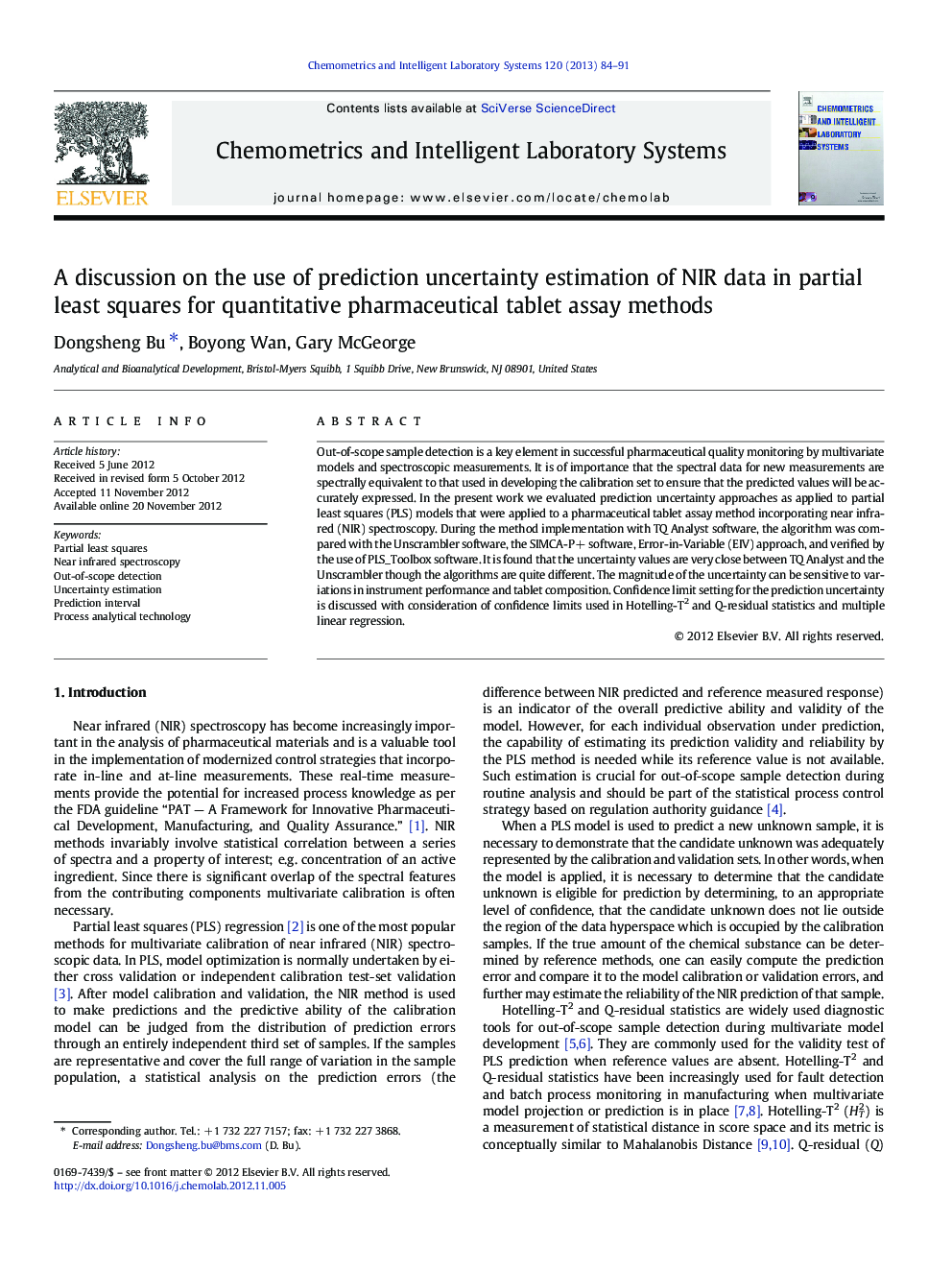| Article ID | Journal | Published Year | Pages | File Type |
|---|---|---|---|---|
| 7563393 | Chemometrics and Intelligent Laboratory Systems | 2013 | 8 Pages |
Abstract
Out-of-scope sample detection is a key element in successful pharmaceutical quality monitoring by multivariate models and spectroscopic measurements. It is of importance that the spectral data for new measurements are spectrally equivalent to that used in developing the calibration set to ensure that the predicted values will be accurately expressed. In the present work we evaluated prediction uncertainty approaches as applied to partial least squares (PLS) models that were applied to a pharmaceutical tablet assay method incorporating near infrared (NIR) spectroscopy. During the method implementation with TQ Analyst software, the algorithm was compared with the Unscrambler software, the SIMCA-PÂ + software, Error-in-Variable (EIV) approach, and verified by the use of PLS_Toolbox software. It is found that the uncertainty values are very close between TQ Analyst and the Unscrambler though the algorithms are quite different. The magnitude of the uncertainty can be sensitive to variations in instrument performance and tablet composition. Confidence limit setting for the prediction uncertainty is discussed with consideration of confidence limits used in Hotelling-T2 and Q-residual statistics and multiple linear regression.
Keywords
Related Topics
Physical Sciences and Engineering
Chemistry
Analytical Chemistry
Authors
Dongsheng Bu, Boyong Wan, Gary McGeorge,
